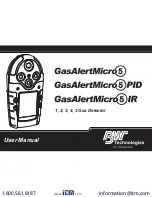
CS8SST VELLEMAN
6
Determining the Target Size
An experienced user who is highly familiar with his metal detector will often be able to determine
an object’s size, shape and depth before he unearths it. This is possible if you know exactly how
to interpret the audio signals emitted by the CS8SST. Listen for special characteristics
whenever the device emits a signal. Determine over how large an area you get a detector signal
and try to “outline” the object before you dig it up.
When you have unearthed the object, compare the object’s size, shape and depth with the
estimate you made before you started digging. As time goes by, you will find yourself
increasingly able to “read” the signals.
Recheck
Good targets are often clustered, which is why it’s a good idea to check the surroundings of a
nice find very carefully. Place the notch controls and the DISC control in the minimum setting. It
is still better to find worthless objects than to let the find of a lifetime slip through your fingers.
Valuable objects are sometimes found under or near to worthless objects, which is why it is a
good idea to check the bottom and sides of the holes you have dug after finding something of
no value.
Practice
Do not hesitate to practice with known good and bad targets – it’s the best way to get to know
your detector and become proficient at detecting.
7. The Importance of the Right Approach
Treasure hunting can be a profitable and rewarding activity for the patient and diligent user.
Time spent researching to locate a worthwhile site for a search can become time wasted if your
search is hasty and erratic. Plan your approach to each individual site beforehand.
It is also important to keep the detector head as close to the ground as possible. The search
head should skim the ground in order to keep the loss of detection range down to a minimum.
Working slowly and methodically will enable you to hear the faintest of signals, thereby
increasing the number of finds.
It is essential for the search head to be kept close to the ground as in B. Do not hold the head
too high (C) or at an odd angle to the ground (B & D). Search methods A, C & D will make you
miss artefacts.







































